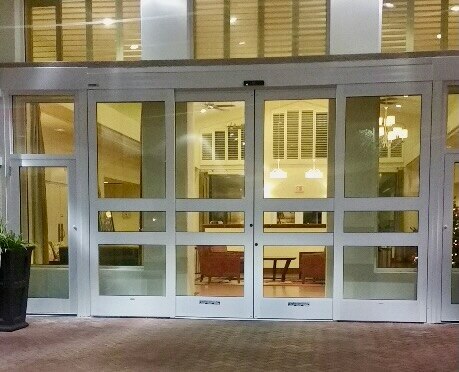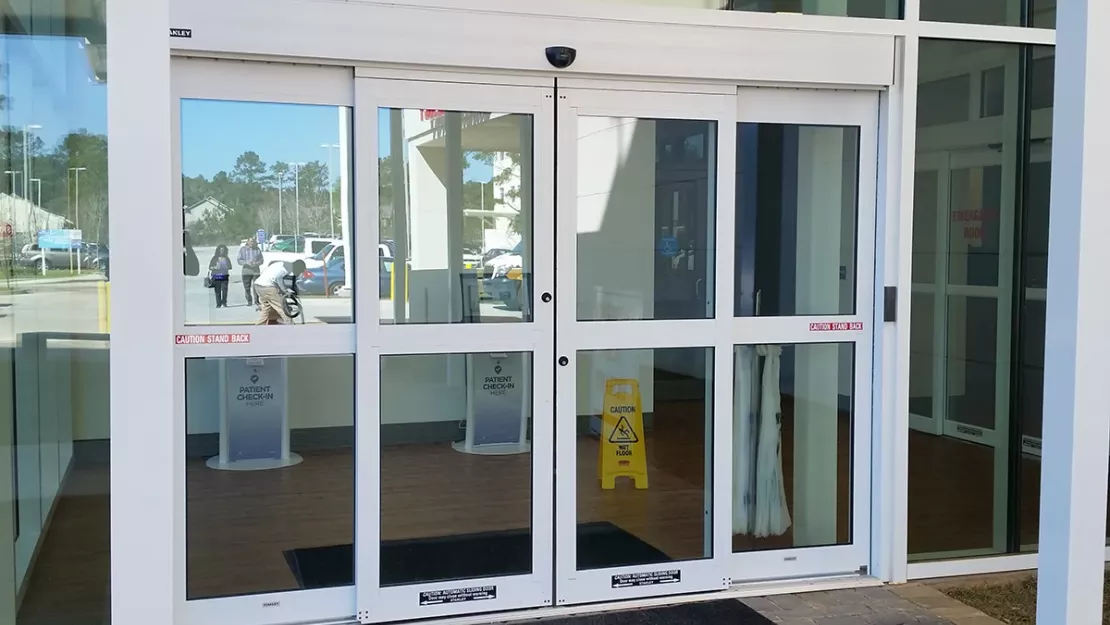FARMINGTON, Conn (Jul. 23, 2024) - STANLEY Access Technologies discusses the benefits and improvements to Dura-Storm™ with World Construction Today.
The team behind the latest Dura-Storm™ doors recently spoke with World Construction Today to explore the significant improvements made to our new line of doors. Key advancements include higher wind pressure ratings, larger door sizes, and new glass options such as laminated and insulated glass. These enhancements have been achieved by re-engineering structural elements to meet the stringent Miami-Dade and Florida Building Code requirements for wind loads and impacts.
Can you elaborate on the specific improvements made to the Dura-Storm door products compared to the previous line, particularly in terms of wind load and impact requirements?
The latest Dura-Storm products improve upon the existing lineup by offering higher wind pressure ratings, larger-sized doors as well as additional glass options, including laminated and insulated glass for new Level D products that enhance the thermal efficiency of the door system. The larger sizes are made possible by re-engineering some of the critical structural elements to allow the doors to meet the rigorous requirements of Miami-Dade and Florida Building Code testing for wind loads and impacts. Some of the more notable improvements include:
- Larger, more robust security hooks that couple the stationary panels to the moving panels.
- Upgraded bottom guide assembly to capture the bottoms of the moving panels in the threshold.
- Strategic use of aluminum and steel reinforcement materials within the stiles of the panels.
- Improved glass stops to secure various approved glass options.
How do the new Dura-Storm doors contribute to improving structural resilience in commercial and public buildings, especially in coastal regions prone to hurricanes?
Dura-Storm doors are rated for varying wind pressure loads and impact loads. When the door and its rated capability are correctly matched to the required performance levels of the building, the door system will be able to handle the expected weather conditions forecasted for that location. In the event of a hurricane or other severe weather conditions, the door system will resist high winds and certain projectiles launched by these winds. This is crucial in coastal regions where wind loads are significantly higher.
SAT door experts are ready to assist you in selecting the proper door for your application and ensure your building’s exterior doors are as strong and safe as possible to help your building endure Mother Nature’s surprises."
You mentioned that the Dura-Storm doors meet and exceed various industry building code regulations. Can you provide examples of these regulations and how the doors comply with them?
The newest Dura-Storm products all have been tested and approved to follow the requirements of the Florida Building Code eighth edition (2023) as well as Miami-Dade County protocols TAS (Testing Application Standards) 201 for Large Missile Impact, 202 for Uniform Static Air Pressure, and TAS 203 for Cyclic Wind Loading.
Additionally, the Dura-Storm doors are certified to comply with codes and standards for safe operation and egress under UL325 (Door, Drapery, Gate, Louver, and Window Operators and Systems) and ANSI/BHMA A156.10 (Power Operated Pedestrian Doors).
Could you discuss the expanded versatility of the Dura-Storm doors, particularly in terms of the additional sizes and configurations available? How does this enhance their ability to safeguard a wider range of facilities, including more “essential facilities”?
The new Dura-Storm products expand the sizes that SAT previously offered. The Level D and Level E rated products can be configured in sizes up to 108”Wx104”H in single-slide, or 192”Wx104”H in bi-part formats. These larger sizes allow for physical and aesthetic compatibility with many more buildings. Previously, SAT did not offer a single-slide Level E product which limited SAT’s ability to service certain customers and buildings. Additionally, the new wider bi-parting solution provides a much larger sliding clear opening to meet the needs of essential facilities, with emergency room entrances being a key target.
Energy efficiency is highlighted as a key feature of the new Dura-Storm doors. Can you explain how these doors achieve superior energy efficiency over existing laminated glass doors, and what impact this has on sustainability and cost savings?
The new Dura-Storm Level D products can be optioned with 1-1/8” insulated and laminated glass. This type of glass contains a ½” air gap as part of its makeup, which reduces the transfer of thermal energy through the glass. This glass helps maintain the interior temperature of a building by forming an insulating barrier and lessening the impact of the differential temperature between the exterior and interior of air temperatures on either side of the door system, resulting in less energy loss, and increased cost savings over the product’s lifetime.

With hurricane season approaching, early adoption of fortified building solutions is emphasized. How can facilities benefit from investing in the new Dura-Storm doors in terms of preparedness and peace of mind?
Any of our Dura-Storm products are rated to provide some level of protection against the typical weather in high-wind environments. SAT door experts are ready to assist you in selecting the proper door for your application and ensure your building’s exterior doors are as strong and safe as possible to help your building endure Mother Nature’s surprises.
Can you provide insights into the materials and technology used in the construction of the Dura-Storm doors that make them highly resilient to windborne debris and hurricane-force wind loads?
The Dura-Storm door system achieves its resilience through a combination of metal alloy and composite glass elements, as well as fasteners that attach all of the elements together. The framework of the door is comprised of extruded aluminum elements that are reinforced in areas with additional aluminum or steel members in the stiles of the door panels. The rated glass types compatible with the Dura-Storm door all have a laminate film layer designed to flex under load and redistribute energy from an incoming projectile. Finally, the type, quantity, and location of fasteners is designed and controlled to ensure that all of the door elements are structurally tied to each other, and that the door system is structurally tied into the structure of the building its meant to protect.
Glass is retained in the door panel by rigidly fastened glass gutters that include a layer of structural VHB tape for Level D, with an additional layer of structural silicone adhesive for Level E doors. 3M’s VHB tape and our Dura-Storm doors were featured on Tomorrow’s World Today, S5E.
How does STANLEY Access Technologies ensure the quality and reliability of its Dura-Storm products, particularly in challenging environmental conditions such as extreme weather events?
SAT’s development team constantly studies and monitors the evolving landscape of building and construction codes as they pertain to door systems. At the same time, the development team keeps an eye on the latest technologies and design practices to ensure they deliver products that add value for our customers in extreme weather zones The production teams at SAT continuously improve to make sure produce high-quality products that work as intended
Finally, could you share any future plans or developments for the Dura-Storm product line, particularly in terms of addressing evolving safety standards and customer needs in hurricane-prone regions?
Codes and standards are constantly in a state of flux, typically renewed at the national level every three years. The main reason for this is to continuously improve the safety of buildings we all use daily. For the Dura-Storm product line, we anticipate that wind pressure design requirements will be increasing as engineers continue to evaluate and plot major storms that affect the public. Additionally, we are seeing a heightened effort to control the environment within buildings. Thermal and air leakage performance requirements will continue to become areas for product development.
